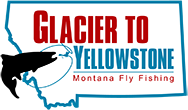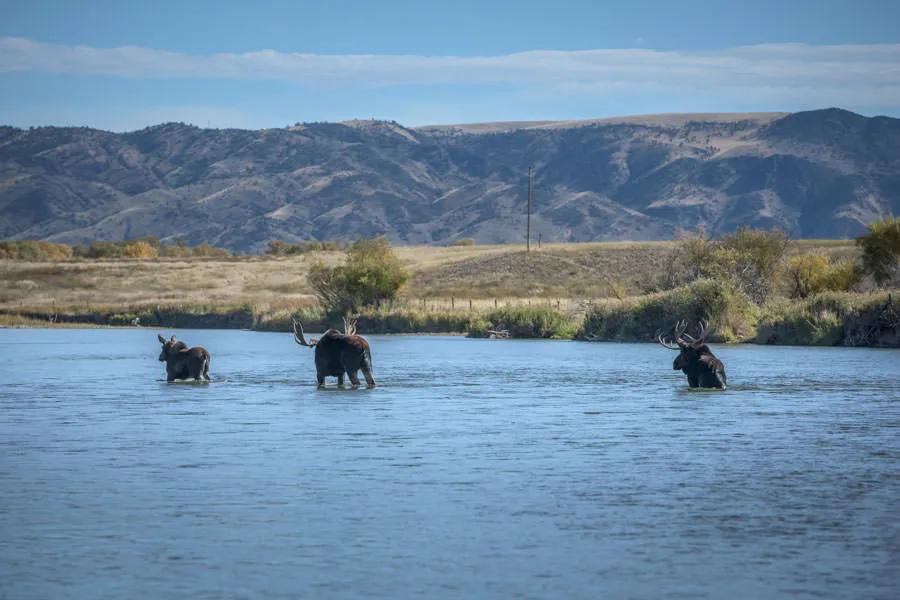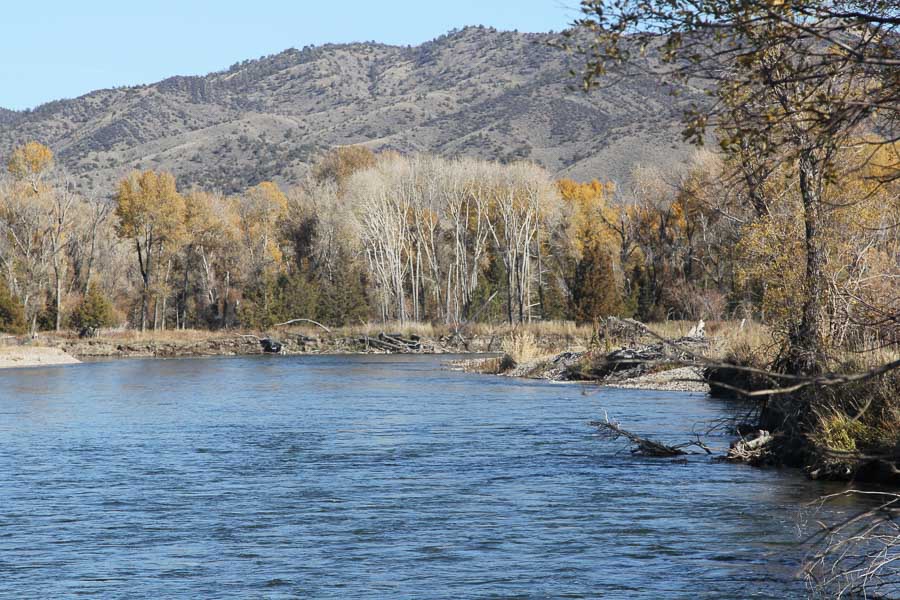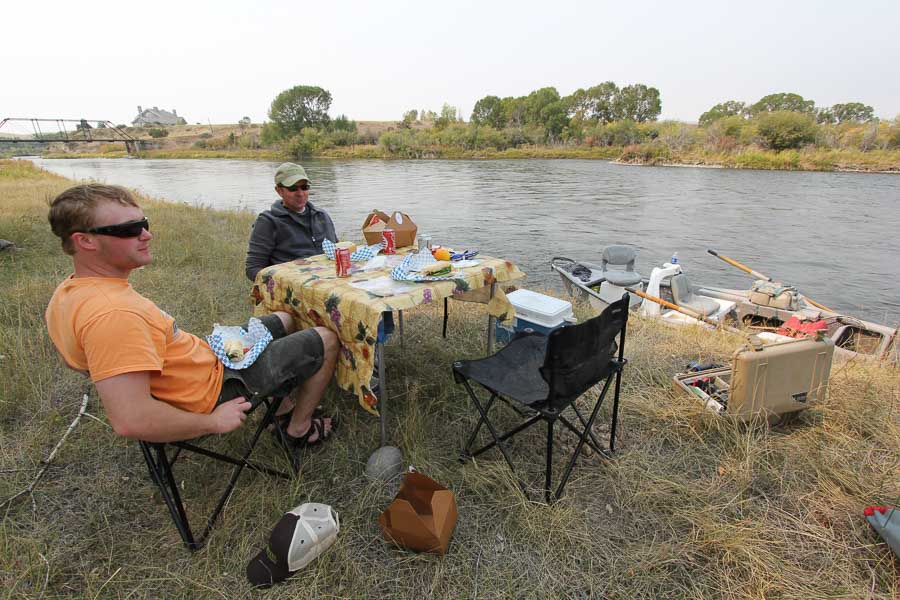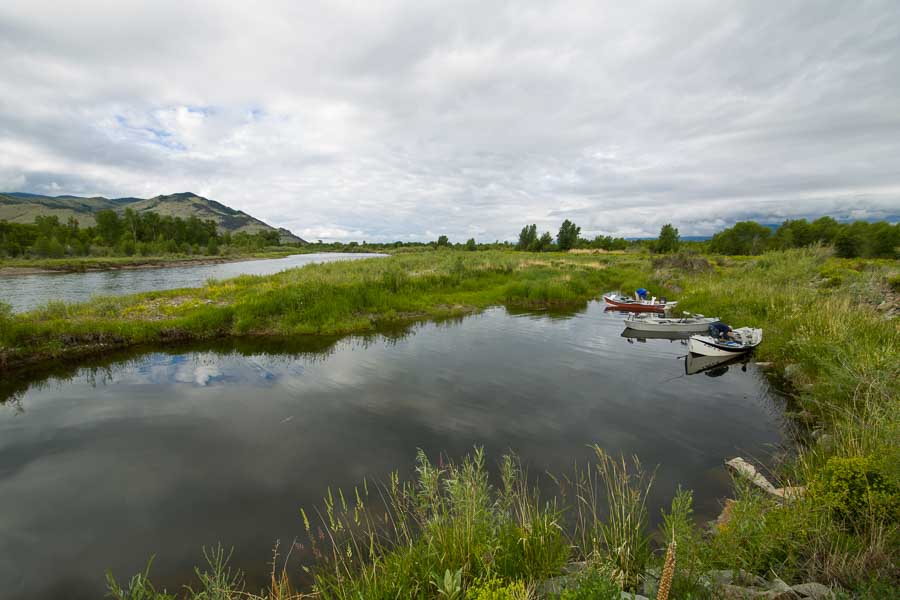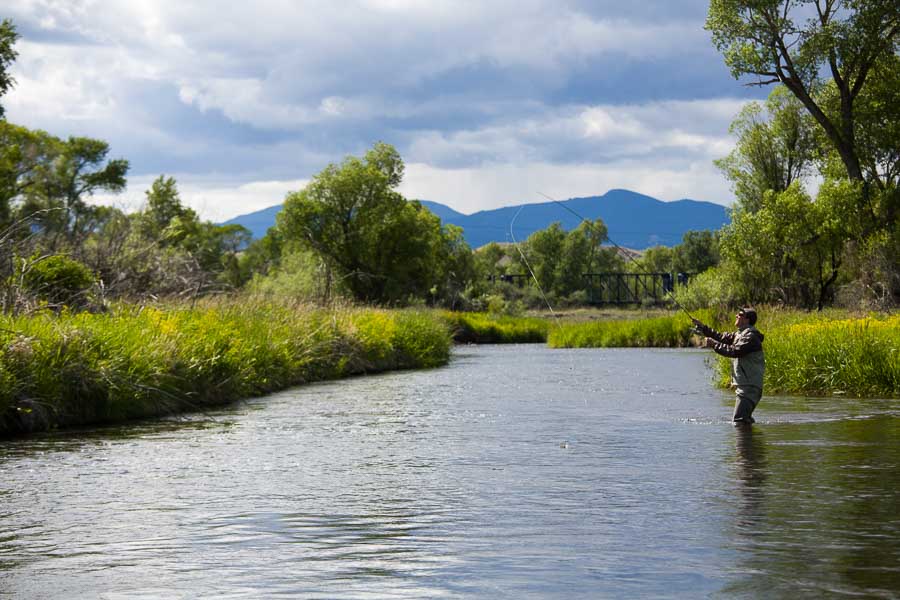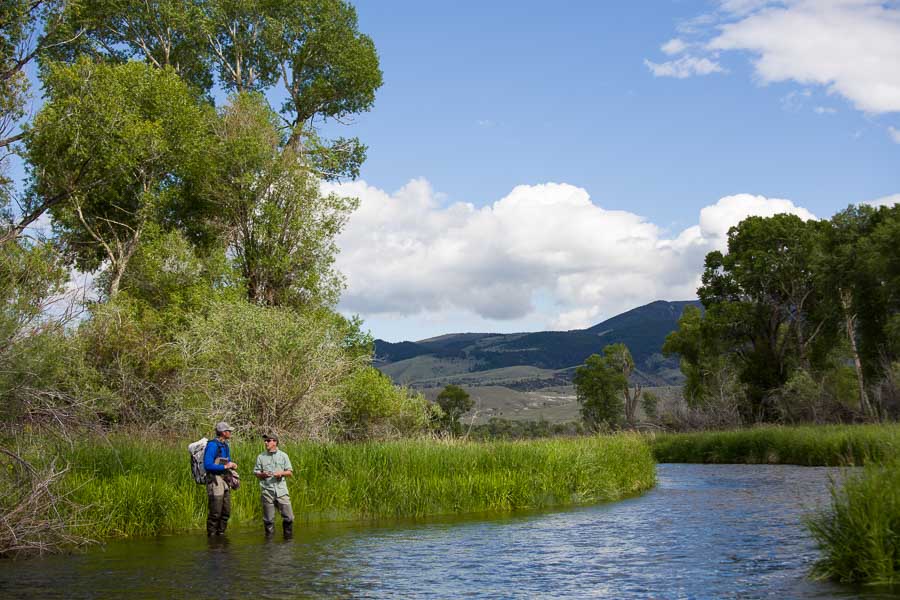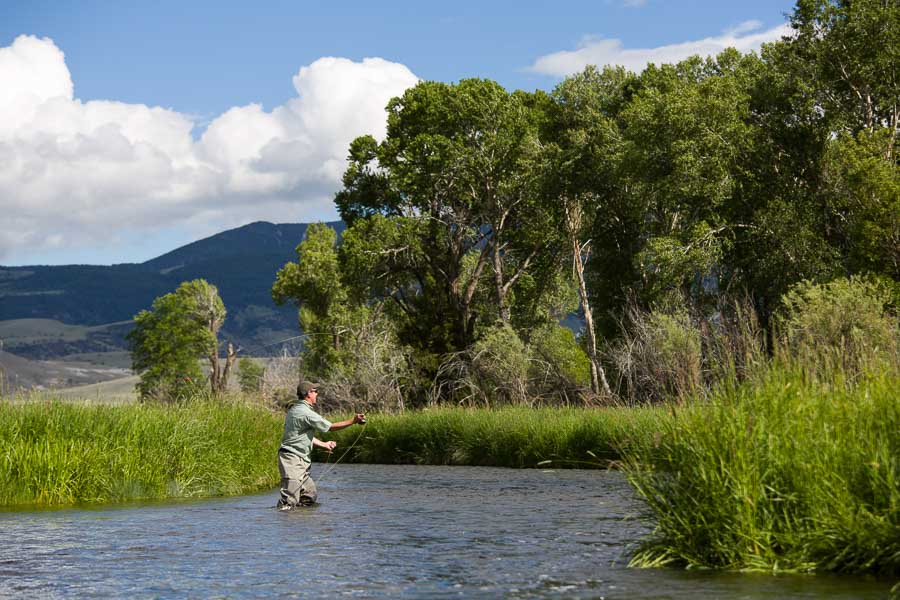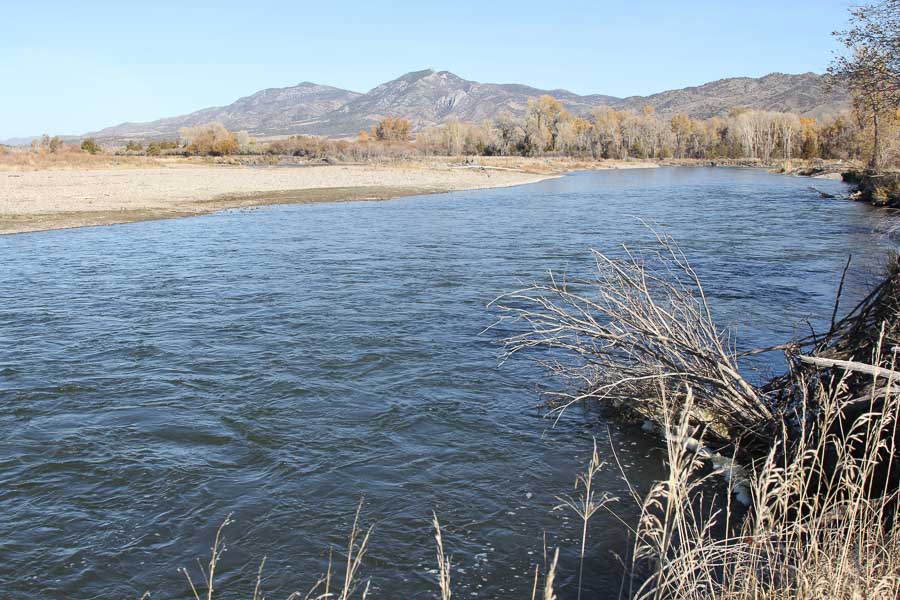The Jefferson is one of the most overlooked major rivers in Montana. For years, the river was plagued by drought and constant dewatering for irrigation. Fortunately, local ranchers and conservation groups have worked together to keep more water in the river each summer. This, along with the protection of several key spawning tributaries and a number of good water years, have allowed fish populations in the Jeff to rebound. The trout numbers do not compare to other famous rivers in the area, however, so the Jeff remains free of crowds. The Jefferson has always had a reputation for big Brown Trout, and that has not changed. It's a great choice if you want to "swing for the fences". While you can certainly catch a lot of trout over here some days, the Jeff will always be a "quality over quantity" fishery.
The best fishing on the Jefferson takes place during the Spring, early Summer, and Fall. The river tends to get too warm and weedy for optimal fishing during the dog days of summer. Large ice jams make the Jefferson a poor choice for winter angling. The Jeff is a large river with limited public access, so it is best fished from a boat. While you can certainly do some wade fishing around the bridges and boat launches, the Jefferson is primarily a float fishery. Trout populations are a bit scattered, so the ability to cover a lot of water and some local knowledge goes a long. Floaters should be aware that there are several diversion dams on the Jefferson that can be very dangerous for the uninitiated.
Sections of the Jefferson
Twin Bridges to Cardwell
The Jefferson begins at the confluence of the Beaverhead and Big Hole River near the town of Twin Bridges, Montana. These are two fabulous fisheries, so it comes as no surprise that this upper section holds the most trout per mile. Floating the very uppermost section of the Jefferson requires launching on either the Big Hole or Beaverhead and floating down to the confluence. The river flows through a broad agriculture valley for approximately 50 miles. Cottonwoods and willows dominate the river bottom and the Tobacco Root Mountains tower in the background. The river braids frequently, creating numerous islands and side channels. This is prime moose habitat so keep your eyes peeled.
Jefferson Canyon
Below Cardwell, the Jefferson enters a 20 mile long canyon stretch. The river slows here with frequent long, slow pools. Limestone cliffs rise abruptly from each side of the river. It is a long days float through the canyon, especially at lower water levels. While there are plenty of trout in the stretch, there are many slow, unproductive stretches that do not hold fish. The trick to fishing the canyon successfully is to know what water to skip quickly and when to slow down and fish hard.
Jefferson Canyon to Headwaters
Once the Jefferson exits the canyon, it goes back to it's former appearance with frequent islands, braids, and gravel bars. The water picks up a bit of steam and the trout habitat improves. This section is the most prone to dewatering, so it is best avoided in the heat of summer, especially in average/low water years. Brown Trout dominate this reach of the river, although Rainbow populations have been steadily increasing over the years. The terminus of the Jeff is at the Missouri Headwaters State Park, where it joins the Gallatin and Madison to form the Missouri.
Fishing the Jefferson by time of year
Spring (March - May)
Fishing usually turns on here in April when the ice jams have all been flushed out and the water temps start to creep up a few degrees. This is a good time of year to throw streamers as the bigger fish are starting to get more aggressive as they come out of the winter doldrums. The preferred setup is a 6wt or 7wt rod, sink tip, and the biggest streamer you can cast with a straight face. Popular colors include black, white, and yellow. The nymph fishing can be good this time of year as well. The river is rarely crystal clear, so larger, brighter patterns work well. San Juan Worms, Crayfish, and flashy beadheads are good choices. While you may see some Blue Winged Olives hatching at times, the Jeff is not known as a dry fly river. Be prepared just in case, but if you are looking for a consistent dry fly bite, it's best to look elsewhere.
Run off (Mid May - Late June)
The Jefferson is generally too dirty to fish from sometime in the middle of May to around the end of June. This is highly variable depending on snowpack levels and local weather.
Summer (Early July - September)
Nymph and streamer fishing is usually good on the Jeff as it begins to drop and clear from runoff. Fishing will continue to be good for several weeks but then begin to slow down as the water gets lower and warmer. Hopper fishing can be good on the Jefferson, especially during high snow years when the water stays cool enough to keep the fish active during prime hopper season in August. Fishing usually starts to pick back up again sometime in September when the longer nights and the first cold fronts of fall start to lower water temperatures. Hopper fishing can be good on warm autumn afternoons, and the streamer bite will start to pick up as the Brown Trout become more aggressive.
Fall (October - November)
Fall is a great time to be on the Jefferson. The Brown Trout begin to feed more heavily in anticipation for the spawn and streamer fishing can induce so terrific strikes. You will want to avoid bright, sunny days in the fall however, especially if you want to throw streamers. The water is at its lowest and clearest levels of the year, and the bright sun tends to drive the fish down and put them off the feed. You can still get some fish on nymphs on the sunny days, but don't expect big numbers (you should never really expect that on the Jeff). The same variety of nymphs that work in the spring and summer will still work, but it is a good idea to fish smaller and drabber patterns in the fall to account for the water conditions.
Winter (December - March)
Ice jams make the Jefferson a very poor winter fishery
Try the Madison River Lodge as a good base for fly fishing the Jefferson River
